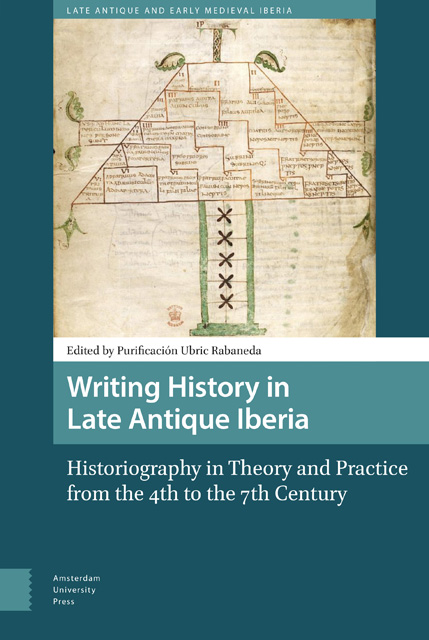 Writing History in Late Antique Iberia
Writing History in Late Antique Iberia Published online by Cambridge University Press: 18 April 2023
Abstract
In the course of the fourth and fifth centuries, Christian writers developed an interpretatio Christiana of the history of humankind. In Orosius’s construction of the past, this understanding was framed as the success story of Christianity. In his Histories Against the Pagans , Orosius perceived history as guided by divine providence. Consequently, the appearance of Christianity in the Roman Empire was held to be part of God’s divine plan for humankind. Christian success stories provided justification for the Christian church(es) in the past, present, and future. For his part, Orosius followed the ethos of the earlier Christian narratives in which the (alleged or real) triumph of the religious group functioned as legitimation of its being right. This chapter examines how the figures of barbarians function in Orosius’s narrative of Christian triumph.
Keywords: Orosius, history, early Christianity, Late Antiquity, barbarians, Christian triumphalism
Introduction
One of these was Christian, more like a Roman (unus Christianus propiorque Romano ), and as events have proved, less savage in his slaughter through his fear of God. The other was a pagan and barbarian, a true Scythian (alius paganus barbarus et vere Scytha ), whose insatiable cruelty loved slaughter for slaughter’s sake as much as glory and plunder. This is how the Roman writer Orosius compares two Gothic warlords in the seventh book of his Histories Against the Pagans . Why is the leader of one attacking enemy group, Alaric, presented as propiorque Romano , ‘nearer to being Roman’, even though his troops sacked the city of Rome in 410? And why is Radagaisus, the leader of another attacking Gothic force, which devastated Italy in 405–406, described as a barbarian and vere Scytha , ‘a true Scythian’, as Goths were habitually called by Greco-Roman writers?
What is the difference between the two Gothic leaders? Orosius describes Radagaisus as insatiably cruel and bloodthirsty, while Alaric is depicted as ‘less savage in his slaughter’ because of his Christianity. Furthermore, Orosius states that Alaric was a Christian and Radagaisus a pagan. Thus, in the late fourth and early fifth centuries, one criterion for being Roman, at least for the Christian writer Orosius, was religious adherence.
To save this book to your Kindle, first ensure [email protected] is added to your Approved Personal Document E-mail List under your Personal Document Settings on the Manage Your Content and Devices page of your Amazon account. Then enter the ‘name’ part of your Kindle email address below. Find out more about saving to your Kindle.
Note you can select to save to either the @free.kindle.com or @kindle.com variations. ‘@free.kindle.com’ emails are free but can only be saved to your device when it is connected to wi-fi. ‘@kindle.com’ emails can be delivered even when you are not connected to wi-fi, but note that service fees apply.
Find out more about the Kindle Personal Document Service.
To save content items to your account, please confirm that you agree to abide by our usage policies. If this is the first time you use this feature, you will be asked to authorise Cambridge Core to connect with your account. Find out more about saving content to Dropbox.
To save content items to your account, please confirm that you agree to abide by our usage policies. If this is the first time you use this feature, you will be asked to authorise Cambridge Core to connect with your account. Find out more about saving content to Google Drive.